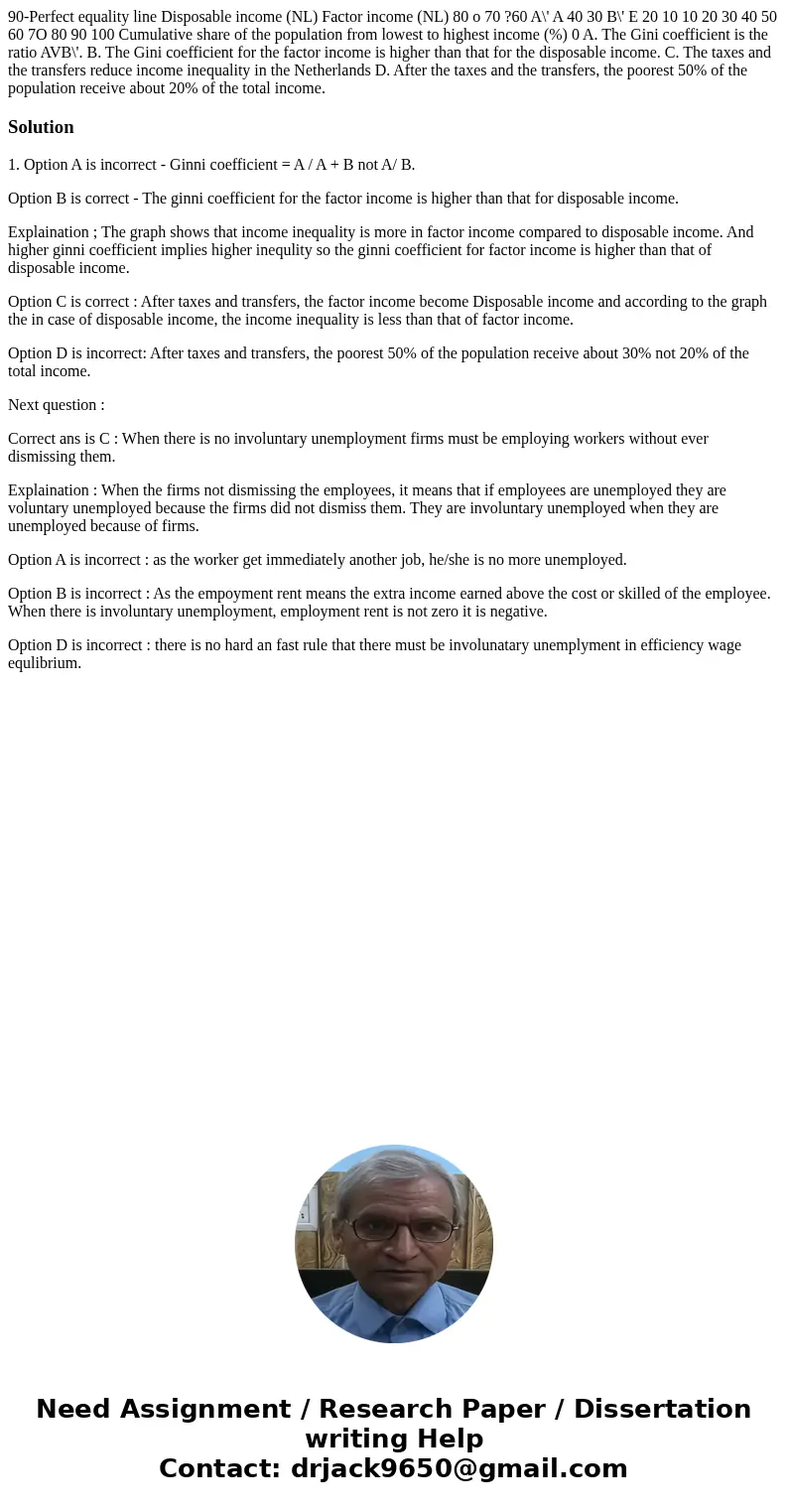90Perfect equality line Disposable income NL Factor income N
Solution
1. Option A is incorrect - Ginni coefficient = A / A + B not A/ B.
Option B is correct - The ginni coefficient for the factor income is higher than that for disposable income.
Explaination ; The graph shows that income inequality is more in factor income compared to disposable income. And higher ginni coefficient implies higher inequlity so the ginni coefficient for factor income is higher than that of disposable income.
Option C is correct : After taxes and transfers, the factor income become Disposable income and according to the graph the in case of disposable income, the income inequality is less than that of factor income.
Option D is incorrect: After taxes and transfers, the poorest 50% of the population receive about 30% not 20% of the total income.
Next question :
Correct ans is C : When there is no involuntary unemployment firms must be employing workers without ever dismissing them.
Explaination : When the firms not dismissing the employees, it means that if employees are unemployed they are voluntary unemployed because the firms did not dismiss them. They are involuntary unemployed when they are unemployed because of firms.
Option A is incorrect : as the worker get immediately another job, he/she is no more unemployed.
Option B is incorrect : As the empoyment rent means the extra income earned above the cost or skilled of the employee. When there is involuntary unemployment, employment rent is not zero it is negative.
Option D is incorrect : there is no hard an fast rule that there must be involunatary unemplyment in efficiency wage equlibrium.

 Homework Sourse
Homework Sourse